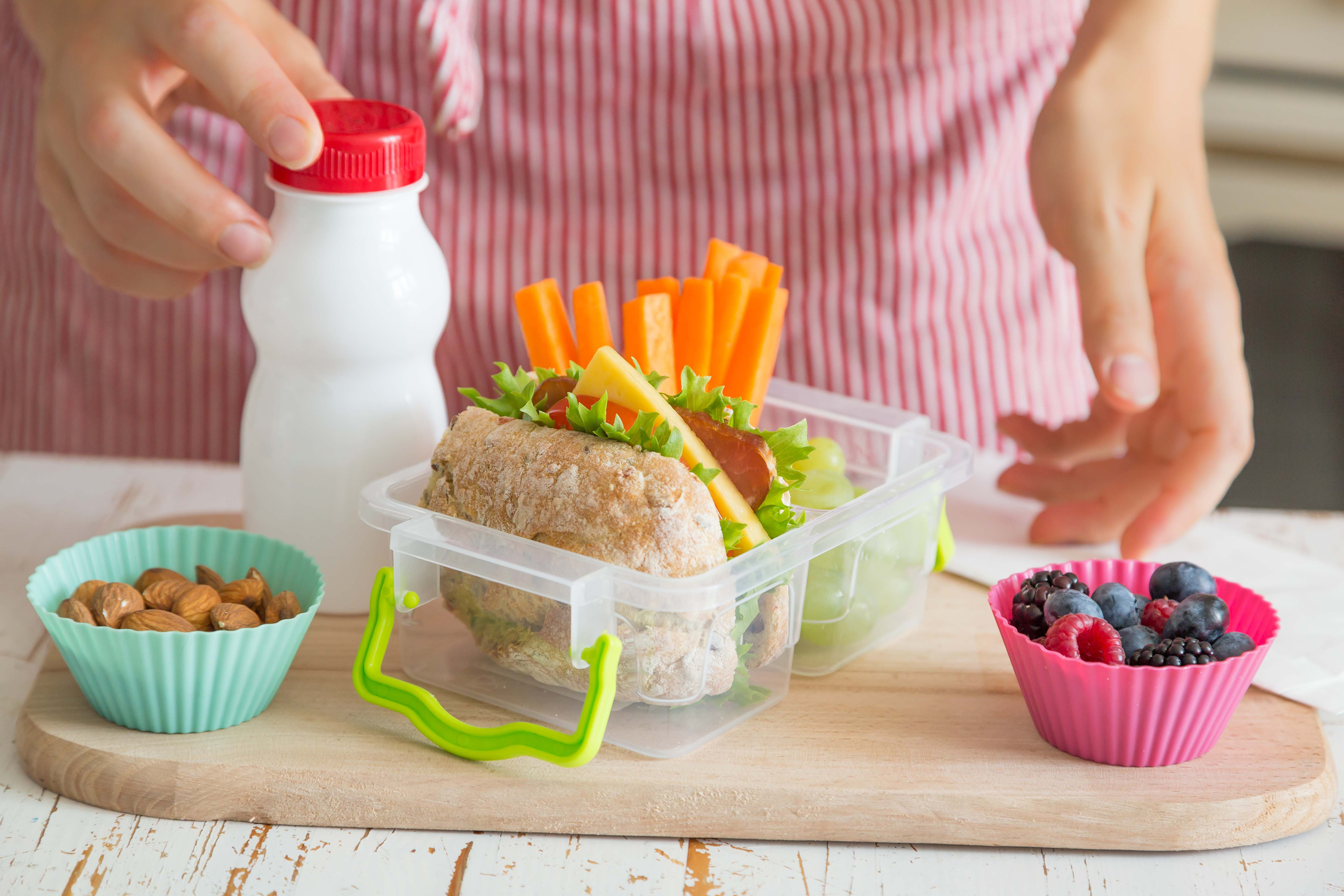Parents who pack lunches for their young children can dramatically improve the nutrition quality of the meals by including a healthy beverage – either plain milk or 100 percent fruit juice, according to a new study by the Rudd Center for Food Policy and Obesity at the University of Connecticut and the Michael & Susan Dell Center for Healthy Living at The University of Texas Health Science Center in Houston (UTHealth) School of Public Health in Austin.
The study shows that some parents who pack lunches for their children ages 3 to 5 appear to be confusing fruit drinks, which have added sugar and are not recommended by health experts, with 100 percent fruit juice, which has no added sugar and is recommended at certain serving sizes (4-6 ounces per day for children 3 to 5).
It is much easier than parents may think to pack a healthy lunch. — Maria Romo-Palafox
The findings of the new study, published in the Journal of the Academy of Nutrition and Dietetics, have important implications for reducing childhood obesity nationally. Approximately 12 million children (61 percent) spend an average of 33 hours per week in early care centers away from home, where they consume two or more meals and snacks each day, and receive 50 percent to 67 percent of their daily calorie requirements.
“One of the most important things we found is that it is much easier than parents may think to pack a healthy lunch,” says Maria Romo-Palafox, a UConn Rudd Center postdoctoral fellow and lead author of the study. “The simplest way to improve the nutrition quality of the lunch is to include a healthy beverage.”
The study was conducted between 2011 and 2013 at 30 early care and education centers in three central Texas cities: Austin, Houston, and San Antonio. Data were collected on lunches packed by parents for 607 preschool-age children ages 3 to 5, on two nonconsecutive days.
As hypothesized, the new research showed that the nutritional quality of lunches differed by the type of beverage packed, using the Healthy Eating Index-2010 (zero to 100 points) to assess nutrition quality. The components of the meals (not including the beverage itself) that differed significantly by beverage packed with the lunch included vegetables, fruit, dairy, fatty acids, sodium, refined grains, and empty calories.
Key findings of the new study include:
- Unhealthy fruit drinks were included in 25 percent of the packed lunches, followed by 100 percent fruit juice (14 percent), plain milk (14 percent), and flavored milk (3.7 percent).
- Meals that included plain milk had the highest average Healthy Eating Index score (59.3), while meals that contained a fruit drink showed the lowest score (48.6).
- After excluding the nutrient content of the beverages, there was no significant difference between the Healthy Eating Index scores of packed lunches that contained fruit drinks compared with lunches that contained 100 percent fruit juice, suggesting that parents may have bought fruit drinks thinking they were 100 percent fruit juice.
“Parents, child care teachers, and the center directors may not realize how unhealthy fruit drinks really are. It’s as bad as drinking soda,” Romo-Palafox says. “Working together, parents, teachers, and health professionals can spread the word about how important it is to choose a healthy beverage when packing a lunch for a child.”
Support for this research was provided by the National Cancer Institute and the Michael & Susan Dell Foundation.
Study co-authors include Deanna Hoelscher, Nalini Ranjit, and Courtney Byrd-Williams of the Michael & Susan Dell Center for Healthy Living at UTHealth School of Public Health in Austin, Texas; Sara Sweitzer and Margaret Briley of the University of Texas, Austin; and Cindy Roberts-Gray of Third Coast R&D Inc., Galveston, Texas.



